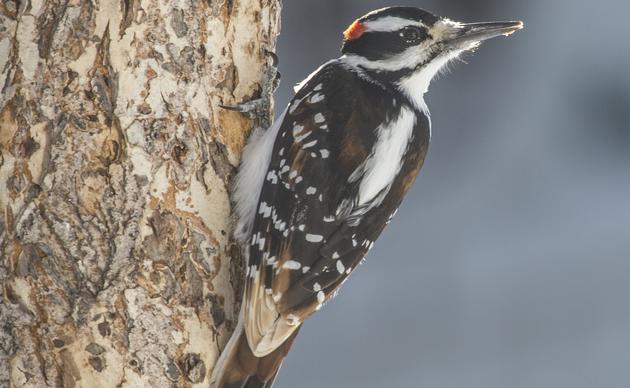Original story published by The Highlands Current
November 2, 2018 | By Alison Rooney
Eric Lind, who has spent 25 years at the Constitution Marsh Audubon Center and Sanctuary in Garrison, including the past 20 as director, will depart this month to relocate to Albany, where he will become director of community science and restoration for Audubon New York.
During Lind’s quarter-century at the sanctuary, its budget doubled. Among other accomplishments, he oversaw the construction of the boardwalk and developed a year-round internship and mentoring program for students entering the conservation field. (To honor his work at the marsh, Audubon New York is creating a scholarship fund in Lind’s name for high school and college students.)
This weekend, the Garrison Art Center is hosting an exhibition of photographs that Lind has taken at the marsh (including in its waters) and the surrounding area. The Marsh opened today (Nov. 2) and continues Saturday and Sunday from 10 a.m. to 5 p.m. The Current spoke with Lind earlier this week.
What brought you to Constitution Marsh?
Close to 30 years ago, I came to see it out of curiosity. I had read about it in an Audubon Field Guide. I always had a deep interest in the natural world. I met Jim Rodd, who was my predecessor — he was leaning out a window, painting a ledge. We developed a friendship, and he ended up recommending me for the job.
What is the most important change you’ve implemented?
The continuous restoration of the habitat matters most of all. There is no finish line. The marsh is incredibly complex, and we’re barely scratching the surface of how we understand it and what we can do to maintain it. We’re concerned about rising sea levels and climate change; we’re always thinking about what it might look like in 50 years.
What has been the most positive aspect of working at the marsh?
As a younger person I used to be focused on birds, wildlife and habitat. But the real joy and pleasure here came from the people I’ve worked with, including the seasonal staff. Seeing them mature and gain an understanding of the consequences of what we do here, and what they can continue to do, has been rewarding. People connect to this place and lifelong friendships develop. I’ve also enjoyed working with my colleagues on the Philipstown Conservation Board.
What’s been the greatest challenge?
We’re a small facility in a region which has exploded in popularity. We have the desire to show off the site, but we have restraints in how to handle it.
How would you describe your new position?
I’ll be looking at projects statewide, and I’ll be able to apply what has worked here on a broader scale. It’s a big change, but I’m not leaving Audubon. I’ll always be connected to the marsh.
Is there a small thing that gets to you most about the marsh?
There’s no singular thing. It’s so extraordinarily beautiful and interesting. It’s a privilege to be in a place for so long that you become aware of how little you know about it.
Fund Your Passion, Advance Our Mission
72% of our annual revenue comes from private donors just like you.




